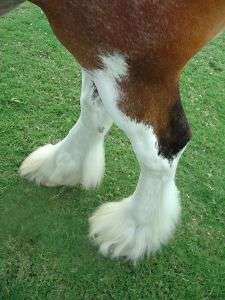~ Various Treatments for the Lower Leg of the Horse ~
Injuries and lameness of the horse are classified as either acute or chronic. Acute means that it is sudden and chronic refers to a condition which is gradual. It is important to know whether an injury is chronic or acute because they are treated differenently. For example an over-reach wound is acute because it happened suddenly while ringbone is usually chronic because it worsens over time.
Sometimes it’s hard to tell what to do for the best so if ever in doubt call someone knowledgable or your veterinarian. Never wrap or bandage a horse unless you know how to do it properly.
This section does not include the use of oral drugs for pain relief and anti-inflammatory properties. It is important to note that many therapies can do more damage to the tissue if used improperly or for too long.
Heat Treatments (for chronic lameness or injuries more than two days old):
1. Liniments are used to increase heat, circulation and healing and are usually used under wraps. Furacin is a popular example of such a linament as it causes sweating especially when covered with seran wrap and then bandaged.
2. Topical creams or ointments containing Capsaisin are used with success but be careful using this product because it can get very hot.
3. Epsom salt soaks help battle infection and inflammation in wounds and sprains just like it does in people. Although used with hot water this treatment can be used for acute wounds and injuries also. Epsom salts can also be used in poultices.
Cold Treatments (for acute or recent injuries and lameness):
1. Cold water treatment helps inflammation in the leg. Cold water hosing works well. You can also soak bandages in ice water and wrap them directly on the leg. These treatments should be used for up to 40 minutes at a time.
2. Ice packs can be wrapped on the leg under a bandage. Use for up to 40 minutes at a time.
3. Rubbing alcohol applied directly on the lower leg cools the area when it evaporates.
*Generally these cold treatments are used at least twice a day.
Other Treatments:
1. Poulticing is a popular treatment for the horse and it usually works well to remove infection and inflammation. A substance is wrapped around the wound or injury. Their are many different kinds of poulticing including ready-made poutices (ie Animalintex), mud poultices and home-made poultices.
2. Dimethyl sulfoxide (DMSO) is available as a gel or liquid and is applied topically to reduce inflammation and is known to be quite effective.
3. Massage therapy is becoming a popular treatment for horses. Rubbing down your horses legs increases circulation and therefore healing.
4. Laser therapy is a recent discovery in equines yet has been used successfully to relieve pain, inflammation and many different leg problems.
5. Electromagnetic (magnetic) treatments have shown to help healing.
6. Shock wave therapy is also a new treatment that battles infammation.
Blistering and Firing:
This method used to be a popular “treatment” and was used alot on racehorses. New injuries were imposed around the old injury to promote blood flow and healing on the lower leg. It is now generally considered inappropriate as newer treatments are readily available.
